Radar controls the airspace of Czechoslovakia as part of the ATS
Until 1943, the German protectorates of the Czech Republic and Moravia were not hit by British and American bombers. In the last year and a half of the war, the Germans were forced to deploy to protect Czech industrial enterprises, providing equipment and weapons the army of the Third Reich, numerous anti-aircraft batteries, searchlight and radar units. At present, it is not possible to establish exactly how many German detection radars and gunholes were deployed in the Czech Republic, but it is reliably known that in the first postwar decade, in the armed forces of Czechoslovakia, along with German anti-aircraft guns, there were trophy radars of the Würzburg and Freya family.
German-made radars
The FuMG-65 (Würzburg D) radar with a parabolic antenna with a diameter of 7,5 m worked at a frequency of 1,87 kHz and gave out a peak power - 8 kW. Target detection range - 60 km. Calculation - 6 people. Mass - 12 t. In order to improve the accuracy of determining the coordinates and the possibility of using the radar to guide anti-aircraft guns, FuMG-65E Würzburg-Riese radar was developed. It differed from the Würzburg D model with a larger antenna and a more powerful transmitter with a range of up to 80 kilometers. The azimuth accuracy was 0,1-0,2 °, which was enough to control anti-aircraft fire. Before the end of hostilities, Telefunken manufactured FuMG-1500 radars around 65.
Antenna post radar FuMG-65 was installed on a concrete base or on a movable platform. The successful combination of high for its time characteristics, satisfactory operational reliability and affordable elemental base - contributed to the massive use of Würzburg radar in the German air defense system. Currently, several FuMG-65 antenna posts are on display at museum exhibitions, including in the Czech Republic.
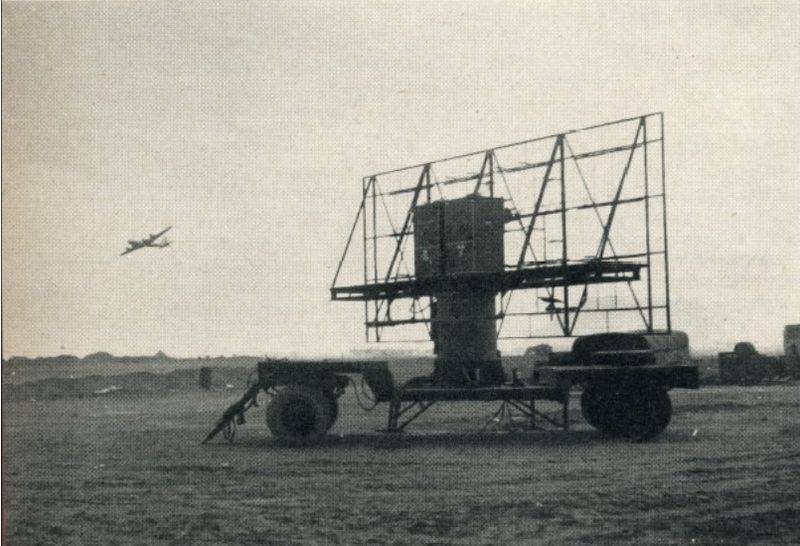
Of the radars of the Freya family in Czechoslovakia, there were FuMG-44 and FuMG-480 radars. Stations operating in the meter range with a peak power of 10-12 kW could detect air targets at a distance of up to 120 km.
In mid-May 1945, 36 cars with German radar equipment were detected at the Malvitsa railway station. In 1947, captured radars were sent to the Skoda plant in Plzen for repair. After the repair, the 10 German radar was put into operation. The operation of the Würzburg and Freya radars in Czechoslovakia continued until the 1954 year. After the establishment of the communist regime in the country and the start of large-scale deliveries of Soviet radar equipment, they were written off.
American-made radars
In addition to the captured German radar stations, until the end of the 1950's in Czechoslovakia, there was a radar of American production SCR-602-Т8 and SCR-527.
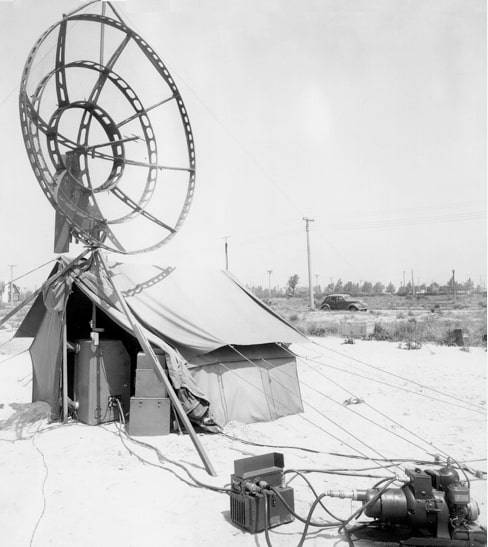
The SCR-602-Т8 radars were received from the UK along with Spitfire fighters. Compact radar SCR-602-Т8 was made from 1943 year and consisted of several nodes with a total weight of 160 kg. A relatively compact radar was intended for use in the field with a continuous operation time of no more than 500 hours. The station, which operated at a frequency of 212 MHz, was powered by a gasoline generator. Peak power - 30 kW. Detection range - to 100 km.
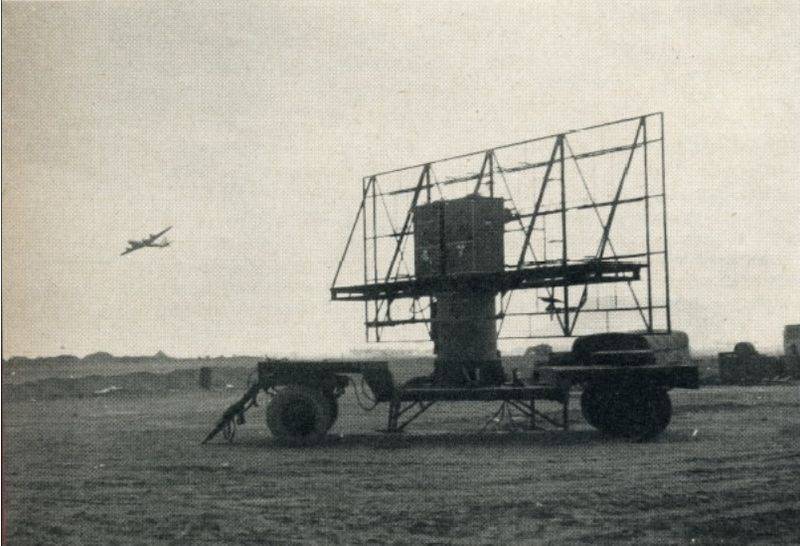
In 1952, the Soviet Union handed over several American-made SCR-527А radars to Czechoslovakia. The meter range radar elements were transported on seven trucks. The total mass of the station - 44 tons. Transmitter power per pulse - 225 kW. Detection range - to 220 km. Unlike the compact station SCR-602-Т8, the radar of the SCR -527 standby mode was designed for continuous operation. The first modifications to the SCR-527 radar began to enter the US military in the summer of 1944. In the final period of the Second World War, the SCR-527A radar was shipped to the USSR as part of the Lend-Lease.
Soviet-made radars
Apparently, the first Soviet-made radar in the armed forces of Czechoslovakia was the P-3A. The P-3 radar was adopted in 1945 year and was intended to replace the RUS-2. Many design solutions P-3 borrowed from the British radar Bady Maggi. After the war, the mobile radar was upgraded, and since 1948, has been produced under the designation П-3А.
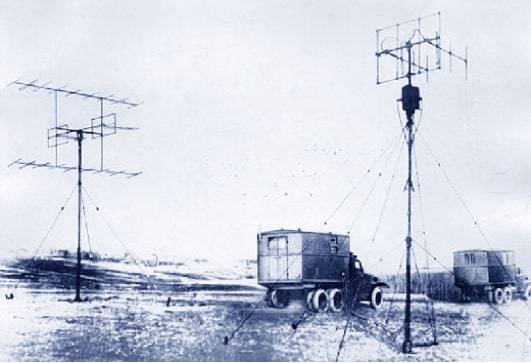
Radar elements were placed on the chassis of two Studebaker US6 vehicles. The station could include the radar interrogator NRZ-1. The detection range of targets flying at high altitude, in a simple jamming environment, reached 120 km. The maximum detection height is 10 km. Soon, the P-3A radar in the Czechoslovak radar units added the P-10 mobile radar. Unlike the P-3A stations, the P-10 radars were located on the ZIS-151 chassis.
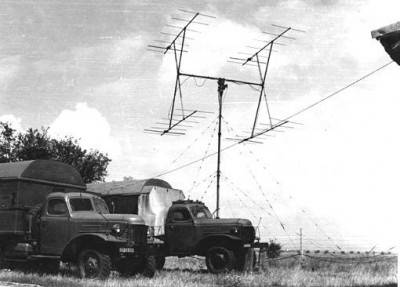
Radar P-10 adopted in 1953 was created on the basis of the P-8, which in turn was an improved version of the P-3A. With a pulse power up to 75 kW, the P-10 radar had a detection range of 180 km. The maximum detection height is 16 km.
Another type of radar received from the USSR in the second half of the 1950-s was P-20. The station, which operated in the centimeter frequency range, was designed to detect enemy aircraft and target fighters to them. Serial production of the P-20 radar began in the 1950 year. A number of sources say that it was created on the basis of the American AN / CPS-6 radar, released in the 1945 year.
Radar P-20 defined three coordinates of the targets: azimuth, slant range and altitude. In fact, two radar stations were combined on the same platform. However, the radar channel, designed to measure altitude, often did not work satisfactorily, and the station was used as a radar range finder. For the identification of their aircraft to the station attached inquiry device HPH-1. Detection range: up to 190 km. The equipment of the station and power supply units were transported by eight ZIS-151 vehicles.
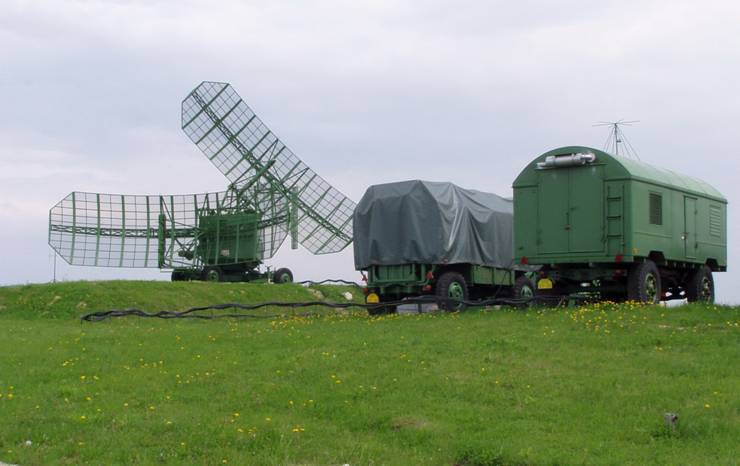
A further development of the P-20 radar was the P-30. Its adoption took place in 1955 year. The station provided the detection range of the 170-180 km fighter at altitudes up to 12 km, with a pulse power of 1 MW. The upgraded version of the P-30M, which appeared in 1958, was produced in a large series and was widely exported. In Czechoslovakia, the P-30M were exploited until the beginning of the 1990-s.
In the middle of 1960-x simultaneously with the MiG-21F-13 and SA-75M air defense systems, the Soviet Union began deliveries of P-12, P-15, P-35 and P-14 radars. Mobile radars of the meter range of the P-12 family are widely used in countries friendly to the USSR, towed modifications are mass-produced and based on the ZIL-157 vehicles.
When the power pulse 180 kW radar P-12 provided the detection of aircraft at a distance of about 180 km, flying in the range of heights to 25 km. During the development, the station creators tried to realize the possibility of determining not only the range and azimuth, but also the altitude. However, the troops used for this purpose specially created radar altimeters, the first of which was PRV-9. Radar facilities P-12М and PRV-9 were delivered to Czechoslovakia together with SA-75М.
Radar P-15 was the first Soviet radar, specifically designed to detect air targets at low altitude. The two-coordinate radar of the decimeter range on the chassis of the ZIL-157 vehicle with a pulse power of 300 kW was capable of fixing aircraft at a distance of 140 km, at an altitude of 500 to 3000 m.
The two-coordinate P-35 all-round radar evolved from the P-30. Unlike the P-30, the P-35 top antenna mirror was mounted horizontally with some tilt in the elevation plane. One of the decimeter channels is replaced by a centimeter. The maximum detection range was 350 km. In Czechoslovakia, the station was mainly intended to guide the actions of the fighter aviation and air control. To determine the height of the target, an altimeter PRV-10 or PRV-11 was attached.
The radar meter range of the family P-14 were among the largest and "far-sighted" in the Warsaw Pact countries. The P-14 radar, put into service in the 1959 year, had a pulse power of 700 kW and could detect targets flying at high altitude at a distance of up to 400 km. The upper limit of the detection zone is 45 km.
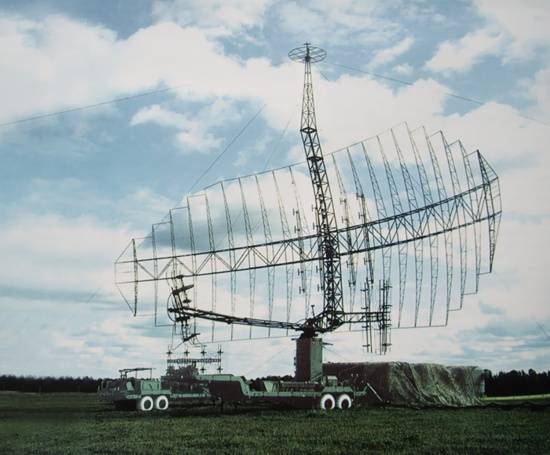
From Czechoslovakia from the middle of the 1960 to the end of the 1980, the X-NUMX radar P-12 / P-14F and 14 advanced Defense-11 were delivered. This allowed not only to form a permanently operating radar field repeatedly blocked over the entire territory of the country, but also to control the airspace on 14-150 km outside the republic. Radar standby meter range family n-200 worked with radio altimeters: PRV-14, PRV-11, PRV-13 the benefit SAM regiment and brigades equipped with SAM: CA-17M, C-75M / M75, C-3M / M125A, C-1BE. To replace the aging mobile radar P-200 and P-12 in the first half of 15-x were delivered radar P-1980 and P-18.
The two-coordinate radar of the meter range P-18 was created in 1971 on the basis of the P-12MP radar by transferring its electronic part to a new element base. At the same time, the radar was mated with a new radar identification system of the nationality “Silicon-2М” created by that time. High technical characteristics, ease of use, reliability, good maintainability and high mobility have led to widespread P-18 radar.
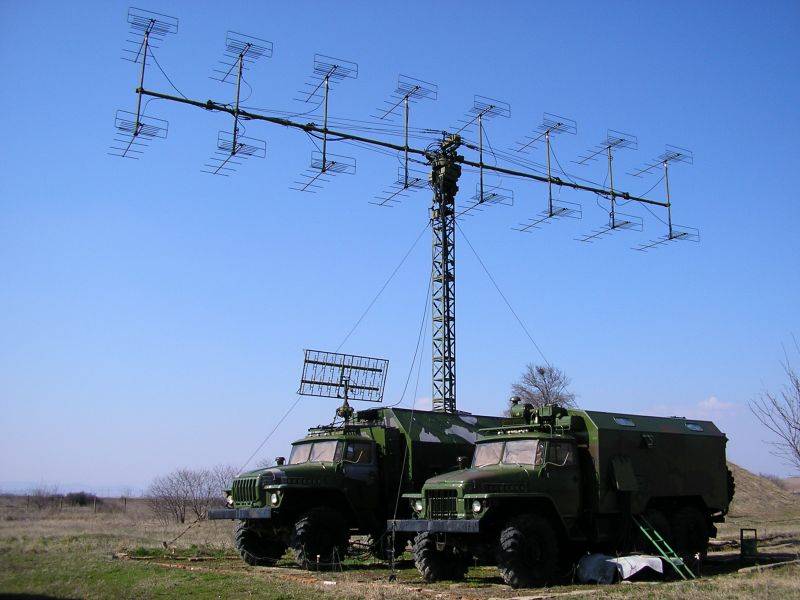
All the equipment of the station is located on the basis of two Ural-375 vehicles. On one of which is placed the radio-electronic equipment with the workplaces of operators, on the second - the antenna-mast device. In the absence of interference, the P-18 radar is capable of detecting a high-altitude air target at a distance of up to 260 km.
Low-altitude radar P-19 decimeter range adopted in service in the Soviet Army in the year 1974. All elements of the station were located on the chassis of three cars ZIL-131. With a pulse power of 300 kW, the detection range is 160 km. The viewing area in height is up to 6 km. Compared to the P-15 radar, the P-19 uses a more sophisticated element base, a “flicker” mode has been introduced to protect against anti-radar missiles, noise immunity has been increased, and state identification equipment has been updated.
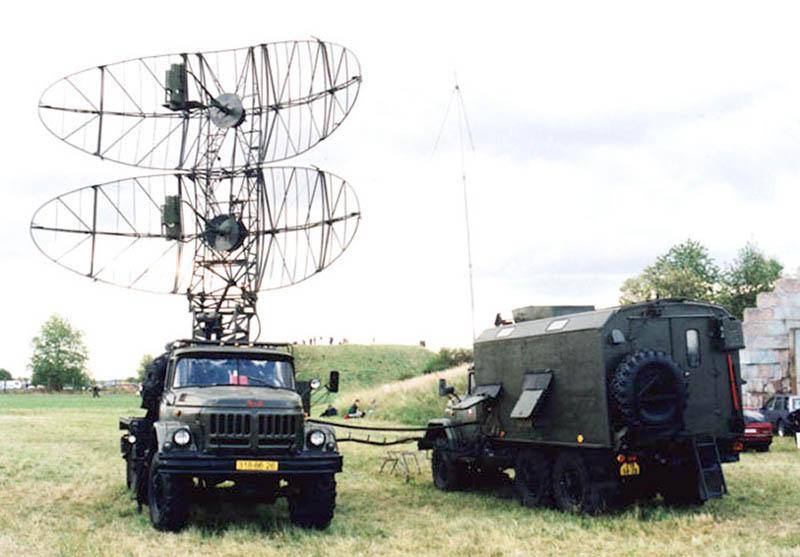
Like the P-15, the P-19 station is intended for use as part of radar stations, in the control units of the anti-aircraft artillery and missile formations of the air defense command and control units of the tactical air defense.
At about the same time, P-18 and P-19 radars in Czechoslovakia were supplied with P-40 mobile radars on an extended AT-T tracked chassis. In total, the Czechoslovak separate radio engineering battalions, anti-aircraft missile regiments and brigade SAM "Circle" and "Kvadrat" there were two dozen radar P-40.
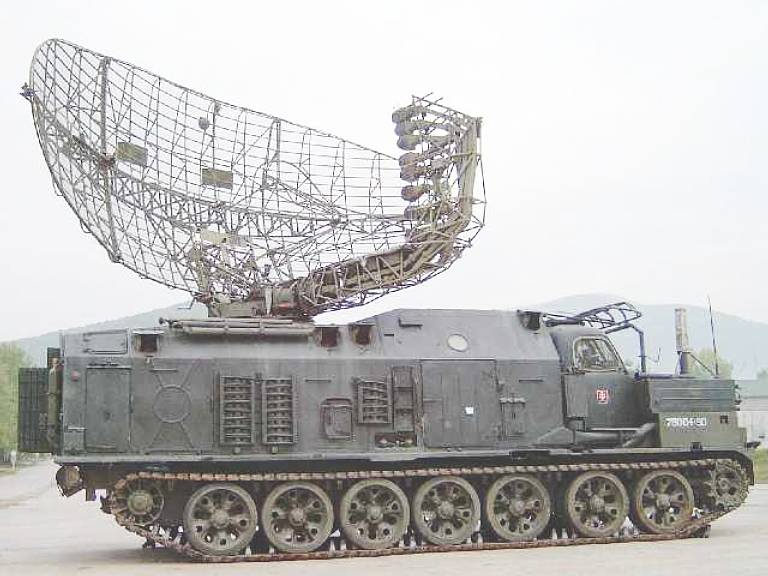
All elements of the self-propelled radar stationed on the same machine, which weighed in the 36 t equipped position. The radar station operating in the centimeter range detects the MiG-21 fighter at a range of 70 km with a target flight height of 500 m, 150 km at a height of 6 km and 180 km at an altitude of 12 km. Currently, all P-40 radars delivered to Czechoslovakia are decommissioned. Several specimens are preserved in Czech and Slovak museums.
Usually, the radio engineering units where the P-18, P-19 and P-40 radio rangefinders were operated were assigned mobile PRV-16B radio altimeters on the KrAZ-255B chassis. The radio altimeter is designed to detect, determine parameters such as azimuth, range and altitude when working with radar stations of circular vision.
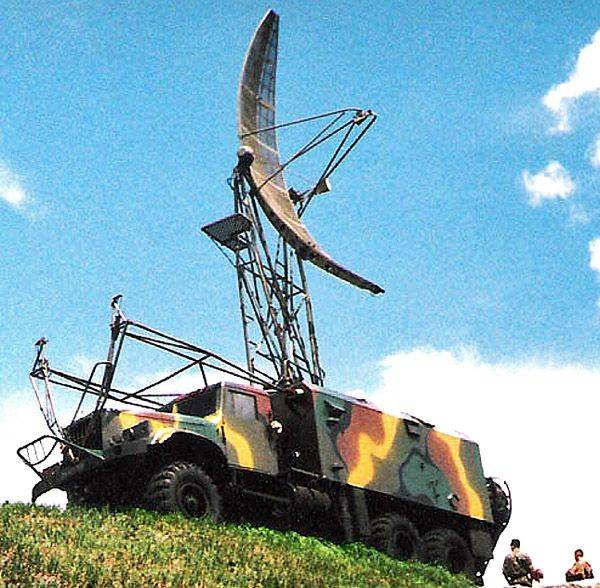
The altimeter PRV-16B operates in the centimeter wavelength range and is protected from the effects of active and passive interference, meteorological formations and extended local objects. The maximum range is 300 km.
The P-37 radars began to be delivered to Czechoslovakia at the beginning of the 1980s and were intended primarily for controlling air traffic and controlling the actions of combat aircraft. And by the beginning of the 1990's, they, along with the P-14 family of radars, were the main stations of the duty mode in the countries of the Eastern bloc.
Two-radar P-37 radar with peak power 650 kW, operating in the frequency range 2-4 GHz, detects targets at a distance of up to 350 km, ceiling - 25 km. Radar P-37 is a deep modernization of the P-35 and has with it a high degree of continuity.
At the end of 1970, at the beginning of 1980, the air defense forces of Czechoslovakia received three radiolocation complexes 5Н87 (“Cabin-66”) and 64ЖX6 (“Cabin-66М”). RKK “Kabina-66” in the export version included two radar rangefinders, a technical post, indicator and modulator equipment, a trailer with spare equipment and measuring equipment, four radio altimeter PRV-17, two ground-based interrogators of nationality, a radio line RL-30- 1M, diesel-generator electrical installations, truck crane. The complex gives consumers three coordinates of the target: azimuth, range, altitude.
The 5H87 RLK detected the MiG-21 fighter flying at an altitude of 15 km at a distance of 380 km. The upper limit of the detection zone is 54 km. Review rate - 6 rpm In the modernized XHUMXIX64 RLC, we managed to improve the complex immunity and abandon one performance meter and one altimeter without sacrificing performance. The use of 6Н5 and 87Ж64 in the air defense forces of Czechoslovakia significantly expanded the possibilities of using the C-6М / М75 and С-2ВE air defense missile systems on high-altitude targets and increased the stability of combat control of an anti-aircraft missile regiment (brigade) in terms of the use of various types of interference by the enemy.
The most sophisticated radars received from the Soviet Union in the second half of 1980's were П-37М, СТ-68У and 22ЖХNNXXМ. Radar 6Ж22М ("Desna-M") initially had to replace the radar 6Н5 and 87Ж64. It allows the detection of strategic, tactical aircraft at medium and high altitudes and to provide combat information for targeting fighter aircraft and target designation by anti-aircraft missile systems.
Three-coordinate radar combat mode, operating in the decimeter range, has a pulse power of up to 100 kW and is able to detect a high-altitude target at a distance of 300 km. The upper limit of the detection of the fighter-type chain is 40 km. Target detection range with an effective reflective surface 2,5 m² at an altitude of 2000 m: without interference - 200 km, in interference - 100 km.
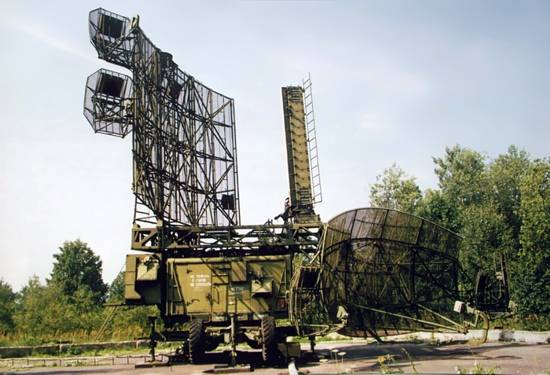
However, the high complexity of the station and the unsatisfactory reliability of individual elements did not allow to realize the potential inherent. After the collapse of the “Eastern bloc”, the 22Ж6М radars supplied to Czechoslovakia were decommissioned due to problems with the repair base and the lack of spare parts.
Unlike the 22ХХNNXXМ radar, the CT-6У three-coordinate stations (68Ж19), received at the end of 6-s, are still being successfully operated. For towing radars instead of KrAZ-1980 used Czech wheeled tractors "Tatra".
Radar radar combat mode ST-68U is designed to detect and track low-altitude targets, including cruise missiles, in active and passive interference in the presence of intense reflections from the ground and in adverse weather conditions and can accompany simultaneously to 30 targets. The impulse power of the 360 kW transmitter, which, according to the developers, makes it possible to detect a target with an 0,1 ESR EPR at an altitude of 100 m at a distance of 46 km, at medium and high altitudes - at a distance of 175 km.
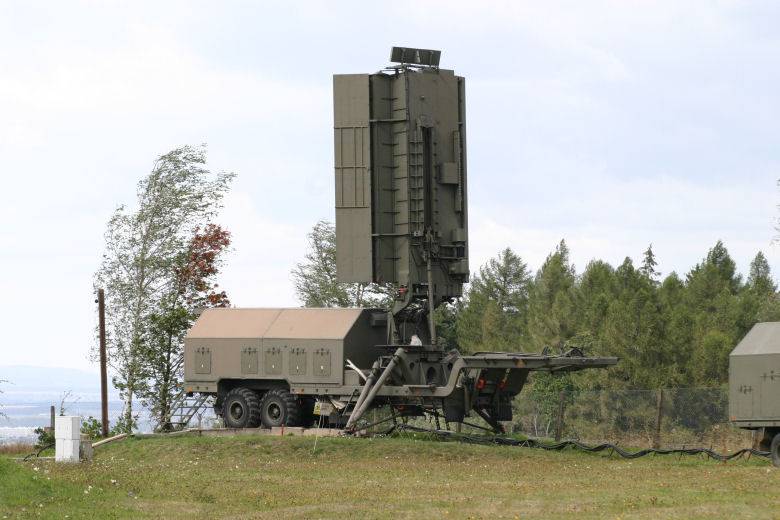
Apparently, the sending of the ST-68U radar to Czechoslovakia was associated with the planned rearmament of the air defense forces of the ATS countries for the C-300PMU air defense system (export version C-300PS). During the autonomous conduct of hostilities in isolation from the command post, the C-300PMU division should have been given a high-altitude three-coordinate radar ST-68U.
In 1990, there were a half dozen constantly deployed radar posts in Czechoslovakia. But, talking about the Czechoslovak means of controlling the airspace, it is impossible not to mention the passive radars that detect aircraft from the radiation of onboard radio systems. Work on the creation of passive radar detection tools began in Czechoslovakia in the late 1950-x. Initially, with the help of spaced receivers located on the ground, it was supposed to detect the operation of the onboard radar system ATRAN of MGM-13 Mace cruise missiles deployed in Germany.
Czech Passive Radar Detection Equipment
Tests of the first Czechoslovak passive radar airborne target detection system PRP-1, which is also known as "KOPÁČ" - Czech. Digger started in 1962 year. The abbreviation PRP originated from the Czech “Přesný radiotechnický pátrač”, which means “precise radio engineering locator”.
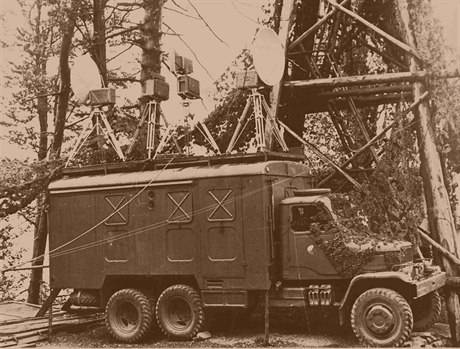
Three receiving stations on the Praga V3S truck chassis, separated on the ground (one central and two lateral), made it possible to accurately determine the coordinates and course of radio sources in the 1 000 - 2 000 MHz frequency band (frequency band D), 4000-8000 MHz ( G / H), 8000-2000 MHz (I / J), as well as IFF and TACAN transponders operating at 1090 MHz. The radio signals were fixed on the station screen manually by the operator, the information about the target was transmitted by voice to the mobile information processing center via the radio network. After that, based on the available data, the position and course of the target were calculated. PRP-1 system equipment could simultaneously accompany 6 air targets. The passive search system PRP-1 was accepted for trial operation in 1963 and was in operation until 1979.
In 1967, Tesla began developing a new passive radar system, which, after being put into service in 1981, received the designation KRTP-81 (“Komplet radiotechnického prhozkumu” - “Radio Intelligence Complex”). The station was deployed in the 1979 year and was able to track 20 targets simultaneously in semi-automatic mode. Later, after upgrading the system, a modification of the KRTP-81М "Ramona-M" was mastered.
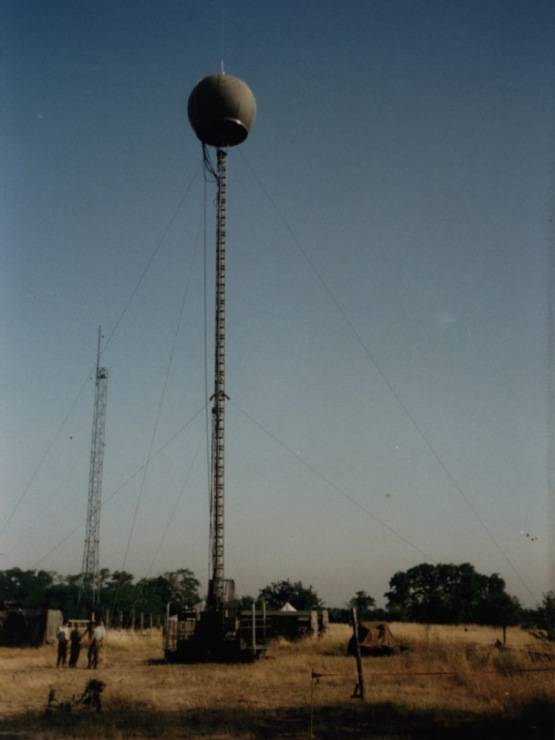
The deployed system consisted of a central hub, from which control and processing of the received signals and two or three receiving stations with spherical antennas mounted on 25 meter masts were carried out. Transmission of primary information from receiving stations occurred via radio relay communication lines. Ramona operated in the 0,8-18 GHz frequency band and provided surveillance in the sector of approximately 100 °. Deploying the system was difficult and took from 4 to 12 hours. Thirteen Tatra T81 trucks were required to transport all KRTP-138M items. The need to use bulky masts and the difficulties associated with transportation and deployment made the passive PTP KRTP-81M system virtually stationary. In most cases, the deployed passive radar did not change the place of deployment during the entire period of its service. Tesla has built the Ramona 17 and the Ramona-M upgraded 14 systems. Of these, most were exported. In the territory of Czechoslovakia during the years of the “cold war” functioned: one station “Ramona” and two “Ramona-M”.
In fact, the Ramona and Ramona-M RSs were peacetime systems. The coordinates of the deployment sites were well known to the potential adversary. Being very bulky and immobile, they had an increased vulnerability to air attack weapons. Based on the operating experience of the PRP-1, KRTP-81 and KRTP-81М equipment, the military wanted more compact and mobile stations with a short deployment time. In 1981, the development of a new passive radar system, adopted by 1987 in the year under the designation KRTP-86 "Tamara", began. In 1991, the base modification was replaced in the production of the improved Tamara-M KTPP-91.
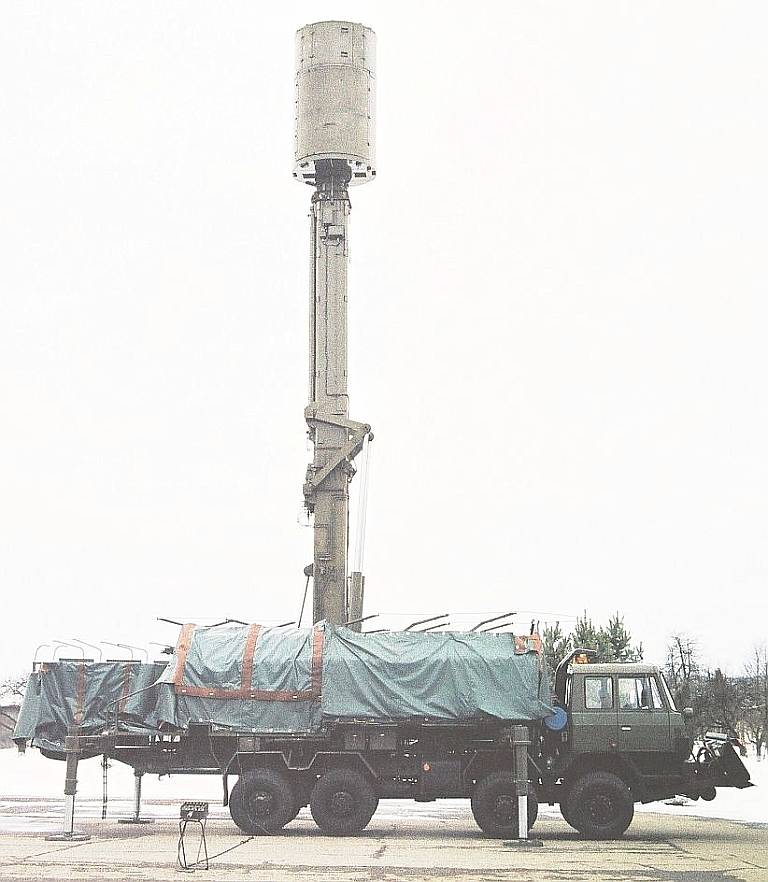
Unlike its predecessors, the KRTP-86 "Tamara" was a mobile system, the elements of which were placed on seven to eight Tatra T815 trucks with the wheel formula 8х8. Passive cylindrical direction-finder sensors were placed on powerful masts that were raised using a hydraulic drive. Antenna-mast device can rise to a height of up to 25 m. In the cylindrical fairing there are necessary antennas and receivers, microwave transmitters for the exchange of information between the components of the complex. As in the previous generation systems, the KRTP-86 "Tamara" used 2-3 RS-AJ / M receiving stations, one hardware RS-KB receiving complex, RS-KM hardware signal processing cabin, and the command ZZP-5 module with information display systems. In combat position, RS-AJ / M receiving devices are located at a distance from 10 to 35 km from each other.
The Tamara station is equally capable of working on tactical (deck) aircraft, strategic bombers, DRLO aircraft, radio intelligence and jammers. Receiving equipment can detect radiation of on-board radars, "friend-alien" system transmitters, TACAN navigation signals, DME range finders, JTIDS tactical information exchange systems, as well as active interference generators operating in the 0,82-18 GHz band. During the military tests conducted on the border with the Federal Republic of Germany, the KRTP-86 passive direction finding equipment detected an F-16A type target at a distance of 400 km, F-15А - 365. Fighters of the previous generation of the F-4-type tracked down at the mark of 395 km, F-104G - 425 km. The detection range of jamming airplanes and early warning systems was within the radio horizon. The computer system of the Tamara system is capable of tracking up to 72 targets in the 100 ° sector. The updated radio system KRTP-91 "Tamara-M" has improved means of displaying and processing information and is capable of detecting targets in the 120 ° sector.
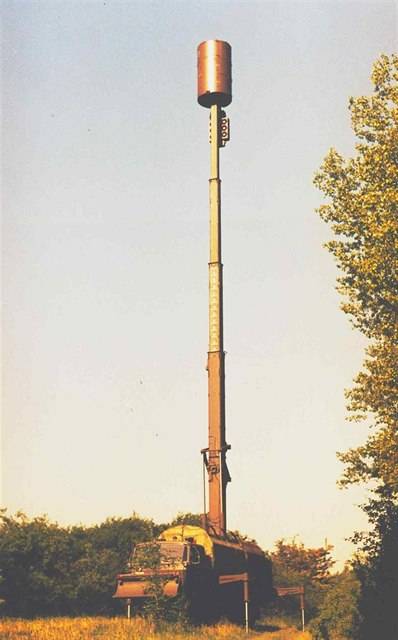
Prior to the collapse of the Warsaw Pact, Tesla built the Tamara 23 radio intelligence complex. According to Western data, 15 systems were supplied to the USSR, the 1 system was supplied to the GDR, and Czechoslovakia adopted the XRUMX passive kit RTR. In 4, the United States managed to get one upgraded KRTP-1991, acquiring it through Oman.
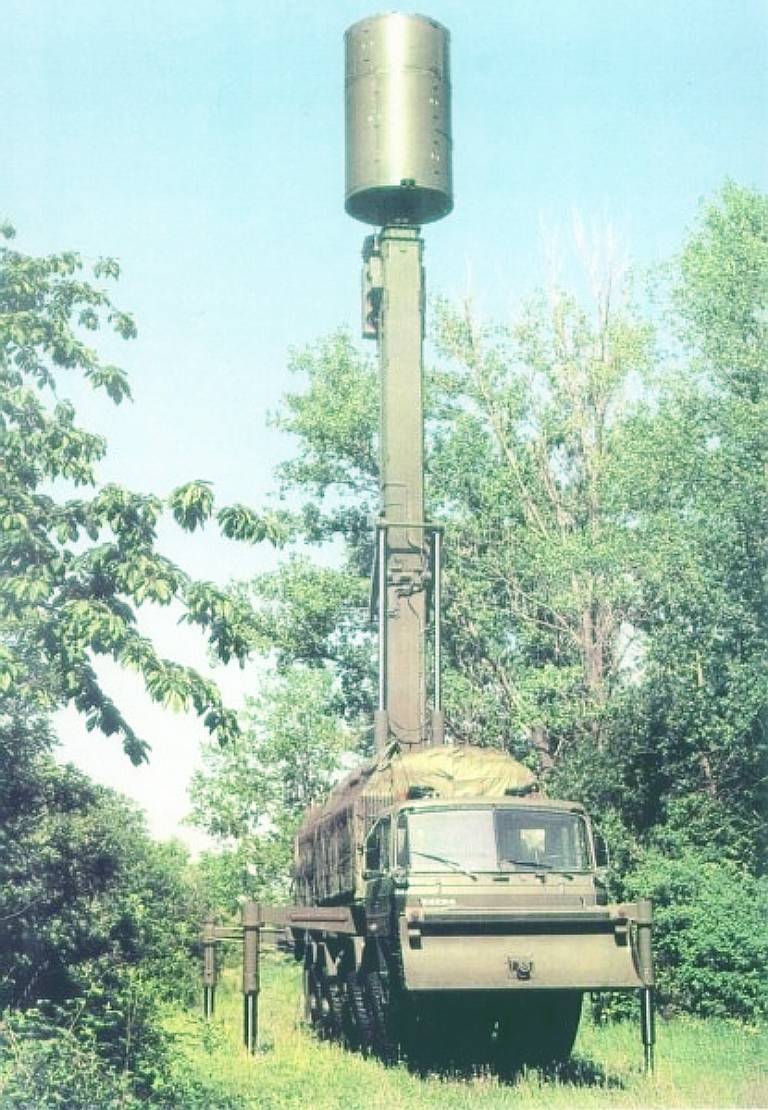
After the “Velvet Divorce”, the development of passive electronic intelligence tools continued in the Czech Republic. At the end of 1990's, ERA, which became the successor of Tesla, announced the development of a new detection system, called Vera. Advances in computing and a new elemental base have made it possible to reduce the size and weight of individual elements and increase the mobility of the system while increasing speed. The range of frequencies in which the station is capable of detecting radiation from airborne and ground targets is 1-18 GHz and, at the request of the customer, can be further expanded from 0,1-1 GHz to 40 GHz. Receiving sensors of the Vera system record the radiation of transponders, radar altitude meters, airborne radars, transmitters of the system of state recognition, TACAN navigation systems. The sector of the review of the PTR "Vera" system has increased to 140 °, and at the request of the customer, with an increase in the number of direction finder stations to 6 units, it may be circular. During the military tests of the “Vera-SM” modification in the Czech Republic, the maximum target detection range was 450 km. At the same time, it was possible to accompany up to 200 targets.
In December 2004, the Vera-SM system was adopted by the Czech Army. The only set of passive radar reconnaissance equipment was placed at the 53-th Center of Radio Intelligence and EW near Ceske Budejovice.
In January, 2004 between China and the Czech Republic was awarded a contract worth $ 58 million for the supply of six stations of export modifications “Vera-E”. As soon as it became aware of the Chinese contract, the United States immediately put pressure on the leadership of the Czech Republic and, ultimately, in May 2004, the license for exporting the Vera-E system to China was canceled. After dissuading the Czech Republic from selling Vera-E stations to China, at the beginning of 2005, the USA themselves purchased one set of equipment for the study. Apparently, Chinese intelligence still managed to access technical documentation. In 2012, the Chinese media announced the DWL-002 passive electronic intelligence system, which resembles the Czechoslovak “Faith” externally and on the basis of its operation.
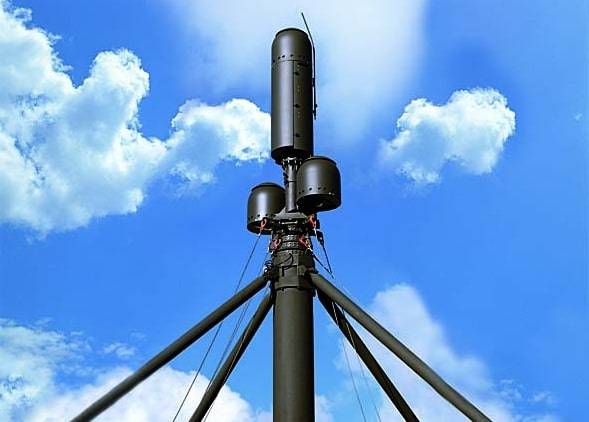
12 May 2014 at NATO headquarters in Brussels, the Alliance Communications and Information Agency and ERA signed a contract for the supply of passive surveillance systems Vera-NG for the needs of NATO. For Vera-NG, a new Ftm 25 / 6 antenna post was built, built into the standard 20-foot container. The sliding telescopic mast has a payload of up to 1,2 tons and maintains performance at high wind speeds without the use of stretch marks. The process of putting the mast into working condition is fully automated. Thanks to the changes made to the software of the computing complex of the data analysis equipment and the expansion of the frequency range, the Vera-NG system, in addition to detecting airborne targets, is able to determine the position of ground and surface sources of high-frequency signals.
Within the framework of the contract, ERA has committed to supply two mobile radio intelligence systems and provide logistical support, including operator training. It is reported that the equipment "Vera-NG" is adapted for the exchange of information in the formats C-EOB and Link 16. Tests of passive Czech-made radars were tested in the north of Italy, after which they were planned to be deployed in unnamed countries near the border with Russia. Information from the Vera-NG systems goes to the NATO Intelligence Intelligence Operations Center, located on the Ramstein air base in the Federal Republic of Germany.
The ending should ...
- Linnik Sergey
- Czechoslovakia. Constructions that are not inferior to the best world analogues
Czechoslovakia. Post-war fighter aircraft
Saab JAS-39 Gripen versus MiG-29: rejection of the socialist legacy for NATO integration
Czechoslovak post-war anti-aircraft installations
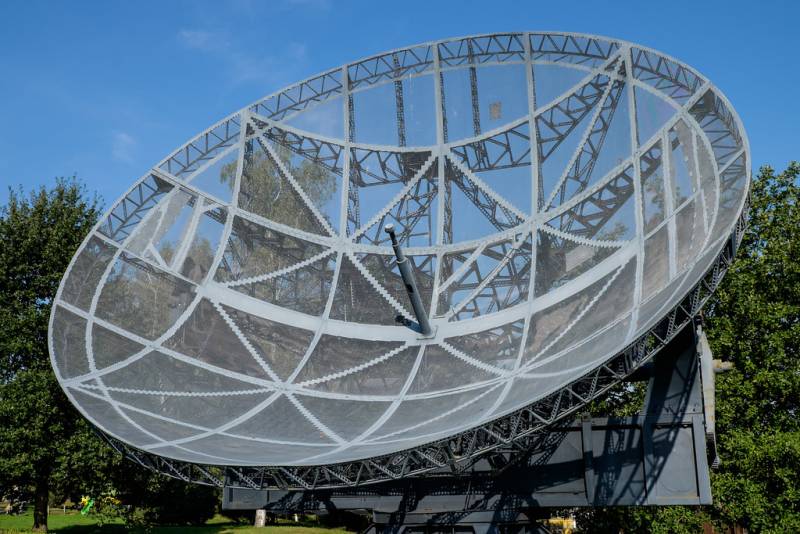
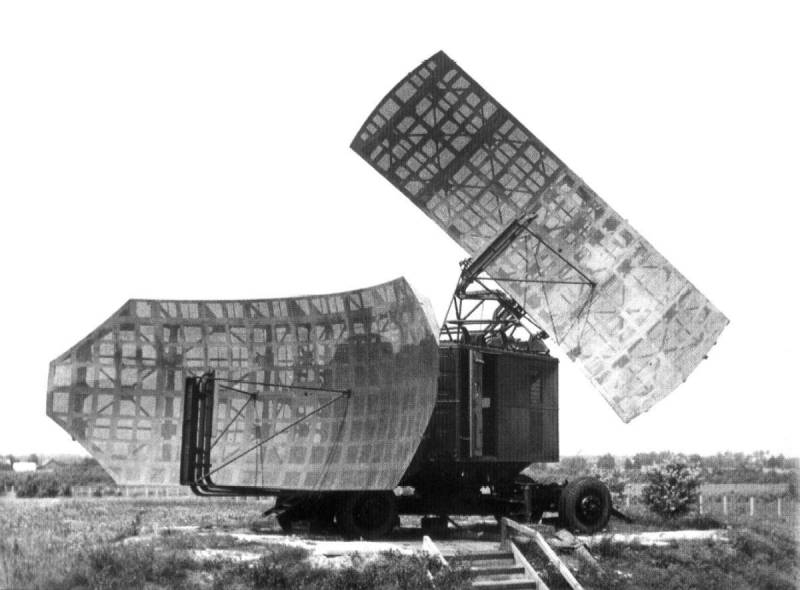
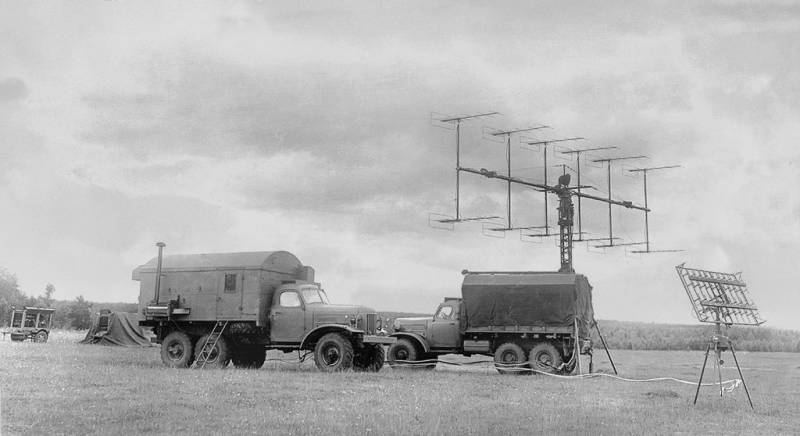
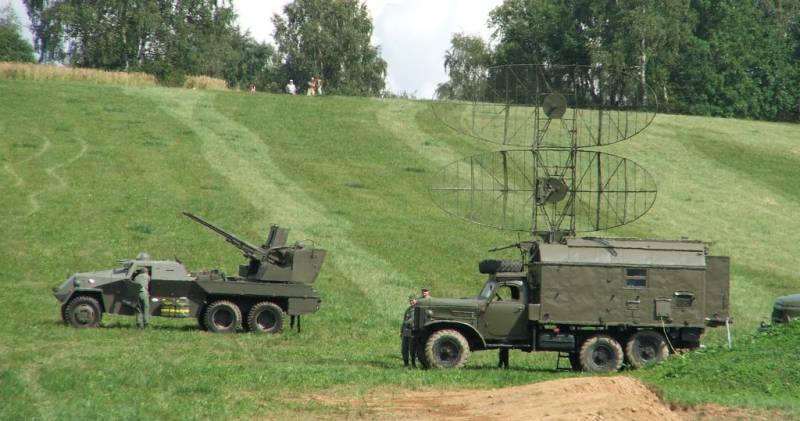
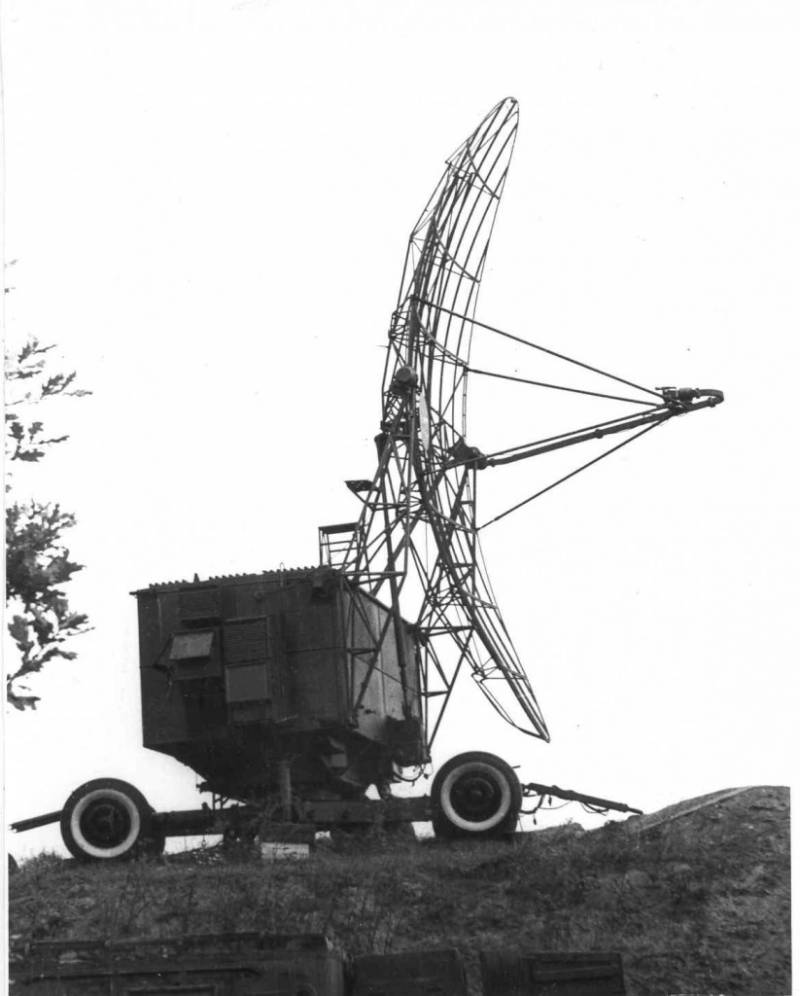
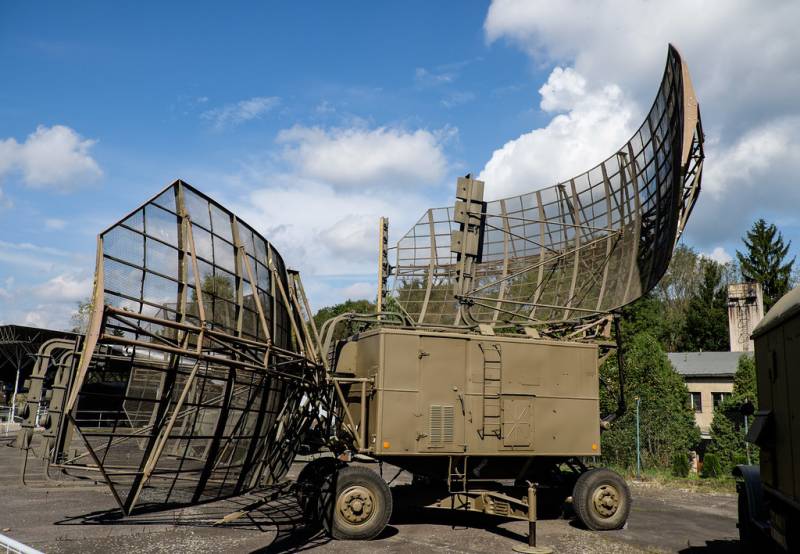
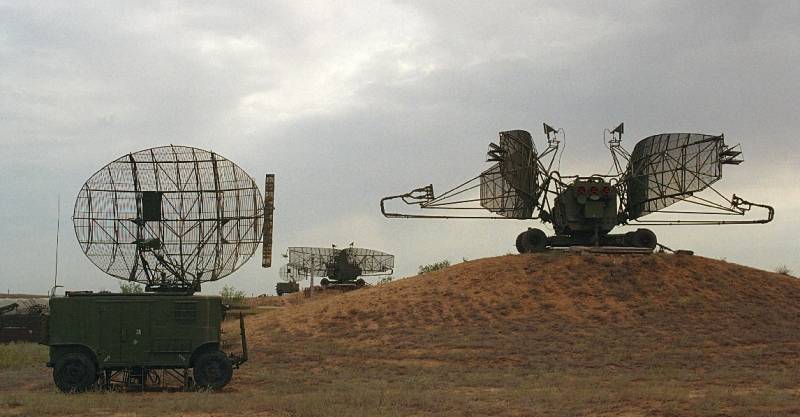
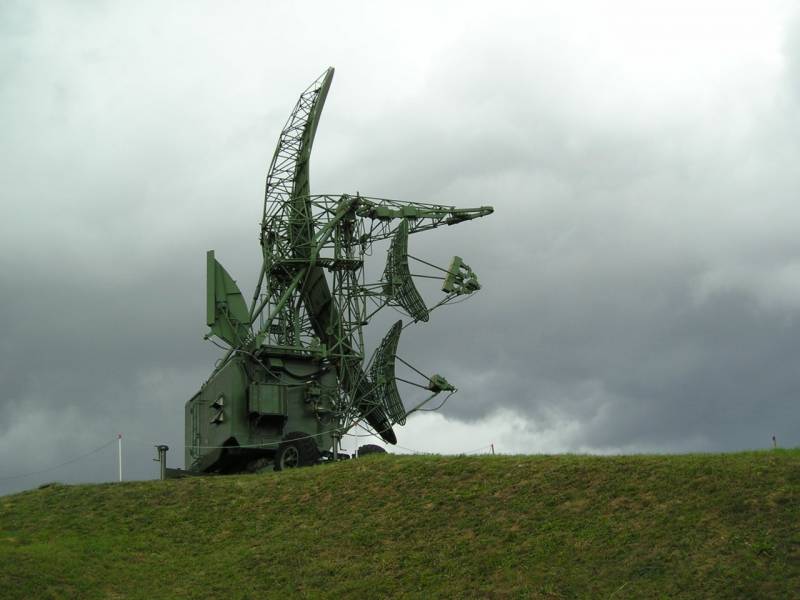
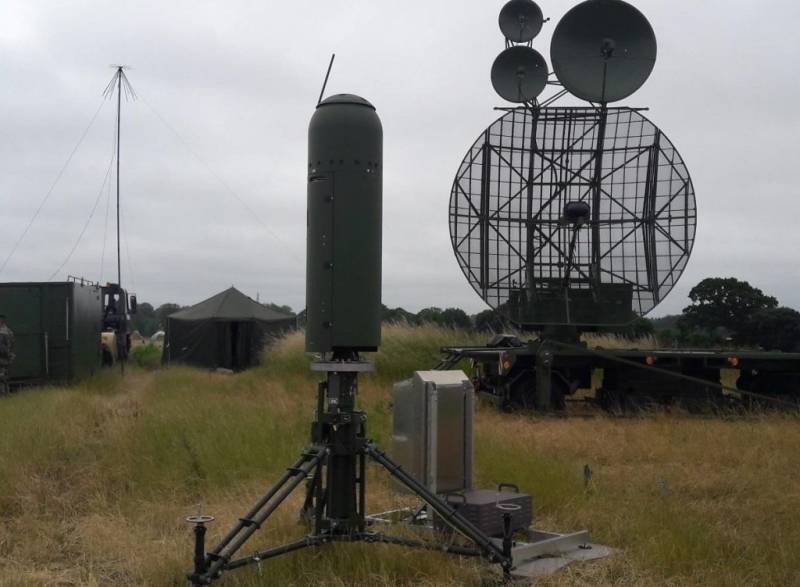
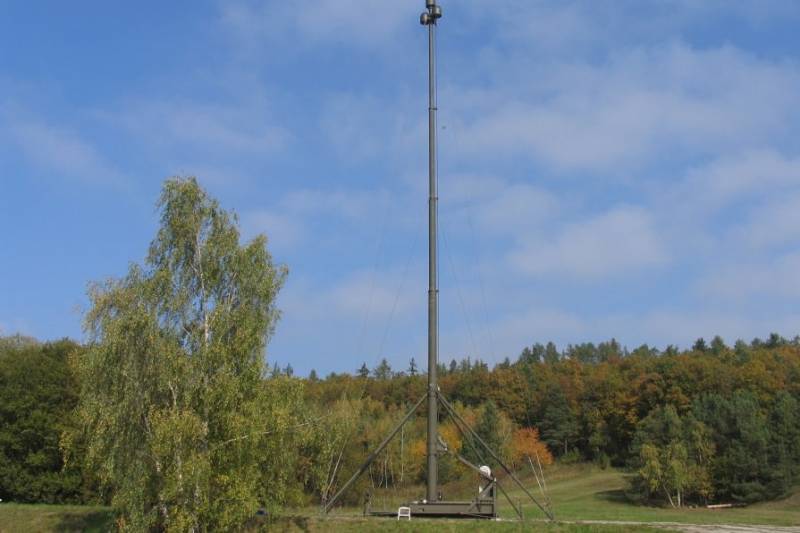
Information